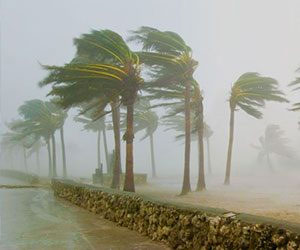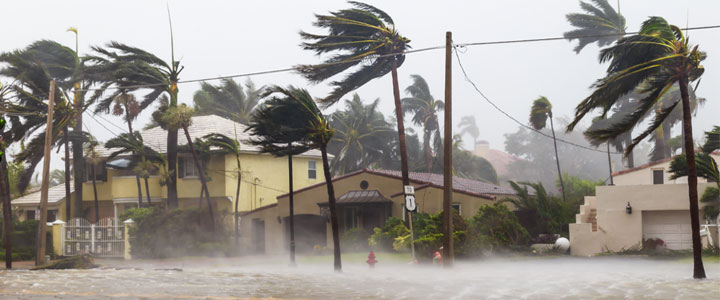Wind Mitigation
BLT Home Inspections are the best home inspectors in Tampa, Brandon, Riverview, Clearwater, St. Petersburg, and Central Florida.
Phone
Incentives for Wind Mitigation
Wind mitigation is a strategy designed to limit the amount of wind damage inflicted on a structure. Various incentives are in place to motivate homeowners to implement these enhancements, and qualified inspectors can determine which improvements are necessary. In some states, homeowners can benefit from reduced insurance premiums.
The Gulf Coast states, which are most prone to windstorm damage from hurricanes, have each considered mandating incentives to mitigate damage due to wind. Following Hurricane Andrew, Florida passed a law requiring insurance companies to offer their customers discounts and credits for existing building features and home improvements that reduce damage and loss from wind. To qualify for this discount, homes must undergo a certified home wind inspection. However, many Floridians do not know of this law.
Lenders in Florida require homeowners to carry windstorm insurance to be approved for a mortgage. Insurers may not provide windstorm insurance to homes vulnerable to wind damage. Those with windstorm insurance can avoid a costly deductible. Deductibles for homes in hurricane-prone areas can exceed $20,000, meaning that mild to moderate wind damage might not be covered by insurance at all. If proper wind mitigation techniques have been used, these expenses can be avoided altogether.

A Few Facts About Windstorms & Wind Insurance
• In 2006, Citizens Insurance, one of the largest property insurers in Florida, requested a 45% rate increase for wind insurance.
• Most insurance companies have taken similar actions.
• In Florida, the portion of a homeowner’s premium covering wind damage can be up to 70% of the total, depending on location.
• Wind mitigation benefits homeowners, private insurers, and all levels of government.
Checklist for Wind Mitigation Techniques:
Garage Doors: These commonly fail during windstorms due to inadequate door-track strength and mounting systems, flimsy metal panels, no windows, the tracks for the door that have six to nine mounting brackets, or continuous mounting, track brackets that are securely attached to the wall and/or horizontal and/or vertical reinforcement on all panels.
Opening Protection: Glass doors and windows should be replaced with impact-resistant glass. They should be structurally attached to the building in order to prevent the entire window from popping out of its frame. Sliding glass doors are especially vulnerable to flying debris due to their large expanse. Once an opening is created during a windstorm, the pressure within the house can rise high enough to cause the roof to fail in areas of low pressure. The picture to the right demonstrates how these areas of low pressure can form.
Roof Covering: There are many kinds of roof covering materials, and some resist wind damage better than others. The most common roof covering materials in Florida are composition shingles and tiles. A key factor in roof covering performance is the method of attachment of the roof covering material to the roof deck. Nails, not staples, should be used to fasten these materials.
Roof Shape: “Roof shape” refers to the roof’s geometry rather than the type of roof covering. The end-walls of gable roofs extend vertically to the sloping roofline. These gable end-walls, if not properly built or braced, have been known to fail outward due to the negative suctions on the wall. Additionally, field testing has shown that hip roofs receive up to 40% less pressure from wind than gable roofs.
Roof Deck Attachment: According to insurance claim data, a house becomes a major loss once the roof deck fails, even partially. The most common roof deck types are plywood and OSB. The most important feature of the roof deck by far is the attachment to the framing compared to the deck’s thickness. Building techniques can help prevent wind damage include roof coverings using shingles that meet the FBC requirements; roof decks that have been installed with large nails and close spacing; hurricane clips/straps that hold the roof structure to the walls; and protection of windows and glass doors with impact-resistant glazing or other protection systems.
Roof-to-Wall Connections: This connection is a critical safeguard that keeps the roof attached to the building and acts to transfer the uplift loads into the vertical walls. This connection is crucial to the performance of the building due to the large negative pressures acting on the roof. Proper installation is essential to connector performance.
Secondary Water Resistance: This is a layer of protection that shields the home if the roof covering fails. It will reduce leakage if the shingles are blown off. A secondary water barrier is relatively rare in homes. The two most common types are self-adhering modified bitumen underlayment, which is applied to the exterior of all joints, and foam seal, which is sprayed onto the underside of the decking.
100% Guaranteed Inspection Services
At BLT Inspections, we offer a simple, no-nonsense guarantee. Attend your home inspection, and if you’re not satisfied with the “Quality” of the home inspection service, tell the inspector before receiving your report, and we’ll either make it right, or you won’t pay the home inspection fee! We’re more thorough. We take our time. We’re not trying to rush through your inspection to get to the next one.
As a certified member of InterNACHI, we ensure that you receive the best possible home inspection and professional report. We adhere to a comprehensive Standards of Practice and abide by a strict Code of Ethics, which puts our clients first and protects their rights as consumers.
Detailed Inspection Reports
Buying a property can be a stressful experience, so be sure to choose someone who has your best interest in mind, and can provide you with the right information needed to make the best decision. Each residential inspection is documented in a detailed inspection report, complete with high-quality images, detailed analysis, and recommendations. The report covers the condition of the home’s heating system; central air conditioning system; interior plumbing system; electrical system; roof, attic, and visible insulation; walls, ceilings, floors, windows, and doors; the foundation, basement, and all structural components. The inspection report is sent to you online shortly after the inspection is completed. Each report is mobile-friendly and can easily be copied and pasted if you need to share the information with anyone.
Contact Us
BLT Home Inspections provides professional inspection services in the following areas throughout Florida:
Tampa / Brandon / Riverview / Clearwater / St. Petersburg
Have more questions?
Feel free to call, email, reach out through the contact form, or schedule an inspection. We look forward to getting the opportunity to work with you.
Phone: (813) 777-9848
Email: info@bltinspections.com

